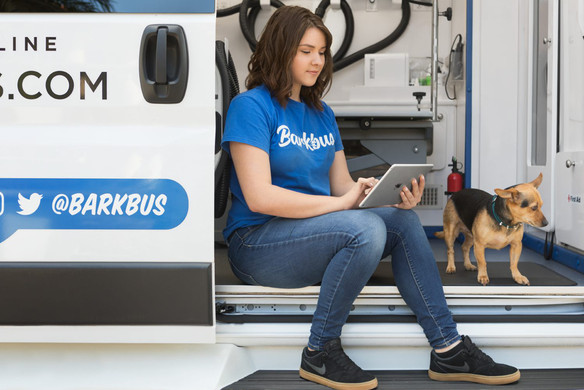Table of contents
You’re starting a business. You’ve found the perfect location, written your business plan, and determined how you’re going to get paid. What’s next? Getting the word out.
You need to market your business.
One of the best ways to connect with your customers is through email marketing. According to a report by McKinsey, email marketing is nearly 40 times more effective for acquiring customers than Facebook and Twitter combined, and it allows you to communicate everything from new products to a change in store hours.
Why send email?
Customers want you to email them. Email is consumers’ preferred method of communication from brands, and since 89 percent of adults check their email daily, email marketing is an effective way to reach everyone.
Email marketing offers a treasure trove of information about your customers, too, because it gives you the ability to understand effective messaging, reduce customer churn, and target segmented audiences. But to do it well, you need to communicate in an effective, concise matter. Here’s how to get started.
What you need to know before you get started
Before you dive in, it’s important to get a handle on what types of email you might use to reach customers or potential customers. There are two main categories of email: transactional and marketing.
Transactional email is generally triggered automatically and sent to a customer (or prospective customer) based on some action (or inaction). They aim to complete a process that the customer started or notify your customer base of updates like system outages or a change of terms.
For example, confirmation email, a courtesy to your customers when they’ve ordered a product, signed up for a newsletter, or registered for an event, is identified as transactional email.
Marketing email can only be sent to customers or prospective customers who have opted into your email marketing program. They’re strategically timed and inform recipients about commercial events like a sale, newsletter, product, or service.
You might send a marketing email to a group of loyal customers to invite them to a VIP party. You could also send a marketing email to a group of lapsed customers with a sale to encourage them to come back into your store.
Learn more about the different types of marketing email, and how to create great ones.
Once you have an idea of what types of email you’ll use — but before you send anything — familiarize yourself with the FTC’s spam laws.
6 tips for creating email
Now that you have an idea of what types of email you’re going to use, it’s time to create them. Here are a few tried-and-true tips to get you started.
Segment your lists
You shouldn’t just send an email to everyone on your list. Your list includes everyone from a first-time customer to your regulars to lapsed customers. And the content you send them should be tailored to recognize their level of interaction with your business. So pay close attention to how you segment lists for any particular email send.
Personalize your content
Personalized email increases clickthrough rates by 14 percent, and improves conversions by 10 percent. Open rate and redemption of birthday email is more than 2.5 times higher than the average across all types of email campaigns.
Use a short subject line
When it comes to a subject line, the shorter, the better — ideally 50 characters or fewer. An analysis of over 40 million emails showed that subject lines with three or four words generated the most responses. A few more strategies to fine-tune your subject line can be found here.
Make templates for your email
To keep your email uniform, use a template. A template is a set HTML file that you can use to create beautiful email, again and again. But don’t get stuck in a template rut — you should regularly test your templates and refresh them every few months. Find Square’s holiday season email marketing templates here.
Optimize for mobile
Eighty-six percent of people read email on their mobile phone. If your email doesn’t look great on mobile, your engagement rates will drop quickly. No one wants to be squinting or scrolling to read your email on their iPhone. Ensure the email marketing program you use optimizes for mobile. Most allow you to see exactly what your email will look like on a mobile phone before you send it.
Test your content
You shouldn’t send it and forget it. To ensure your communication is effective and helps you reach your goal, you need to check back in on it. You may also need to test several types of email or messaging. Your email marketing program should include analytics so you know exactly what messages resonate with your customers, and when the best times are to get in touch with them.
When you should send email
When people sign up for your email list, they’re saying they want to hear from you, so you should be sending email at regular intervals. But it’s up to you to determine exactly when that is. Start out by testing a few times and days with different groups on your list, and utilize your email analytics to determine when your recipients are most engaged.
Don’t forget to measure
After your email is sent, it’s up to you to measure your success and refine content to ensure even more activations in the future. From open rate to actual product conversions (or an increase in in-person sales), it’s important to understand what makes your subscribers tick — and what drives them to buy.
Whatever (and whenever) you send, it’s important to pay attention to your email analytics. That data is the key to learning about your customers and how to best engage them via email. Get started with Square Email Marketing.
![]()












